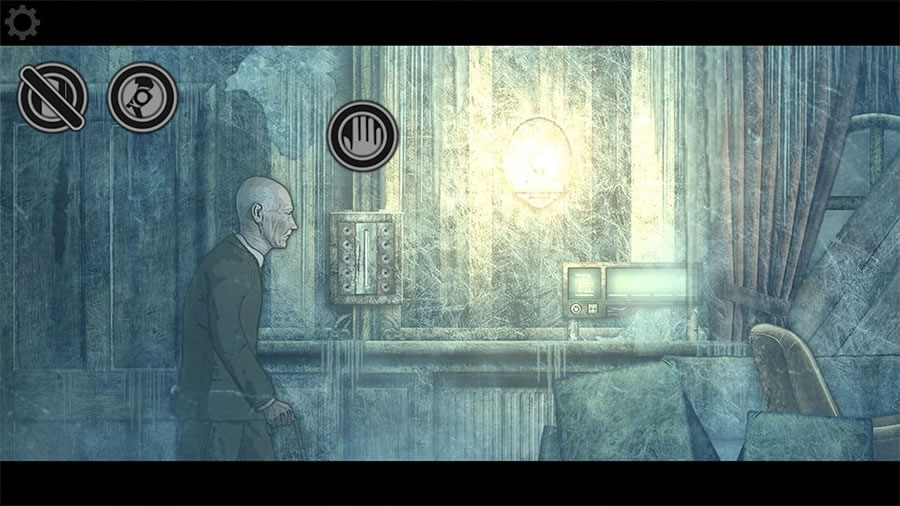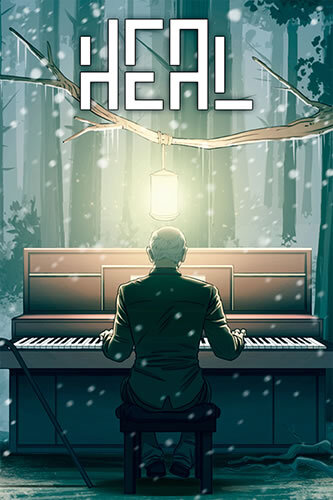- CLASSIC MAGAZINES
- REVIEW CREW
A show recapping what critics thought back
when classic games first came out! - NEXT GENERATION'S BEST & WORST
From the worst 1-star reviews to the best
5-stars can offer, this is Next Generation! - NINTENDO POWER (ARCHIVE)
Experience a variety of shows looking at the
often baffling history of Nintendo Power! - MAGAZINE RETROSPECTIVE
We're looking at the absolutely true history of
some of the most iconic game magazines ever! - SUPER PLAY'S TOP 600
The longest and most ambitious Super NES
countdown on the internet! - THEY SAID WHAT?
Debunking predictions and gossip found
in classic video game magazines! - NEXT GENERATION UNCOVERED
Cyril is back in this spin-off series, featuring the
cover critic review the art of Next Generation! - HARDCORE GAMER MAGAZING (PDF ISSUES)
Download all 36 issues of Hardcore Gamer
Magazine and relive the fun in PDF form!
- REVIEW CREW
- ELECTRONIC GAMING MONTHLY
- ELECTRONIC GAMING MONTHLY RANKS
From Mario to Sonic to Street Fighter, EGM
ranks classic game franchises and consoles! - ELECTRONIC GAMING MONTHLY BEST & WORST
Counting down EGM’s best and worst reviews
going year by year, from 1989 – 2009! - ELECTRONIC GAMING BEST & WORST AWARDS
11-part video series chronicling the ups and
downs of EGM’s Best & Worst Awards!
- ELECTRONIC GAMING MONTHLY RANKS
- GAME HISTORY
- GAME OVER: STORY BREAKDOWNS
Long-running series breaking down game
stories and analyzing their endings! - A BRIEF HISTORY OF GAMING w/ [NAME HERE]
Real history presented in a fun and pithy
format from a variety of game historians! - THE BLACK SHEEP
A series looking back at the black sheep
entries in popular game franchises! - INSTANT EXPERT
Everything you could possibly want to know
about a wide variety of gaming topics! - FREEZE FRAME
When something familiar happens in the games
industry, we're there to take a picture! - I'VE GOT YOUR NUMBER
Learn real video game history through a series
of number-themed episodes, starting at zero! - GREAT MOMENTS IN BAD ACTING
A joyous celebration of some of gaming's
absolute worst voice acting!
- GAME OVER: STORY BREAKDOWNS
- POPULAR SHOWS
- DG NEWS w/ LORNE RISELEY
Newsman Lorne Riseley hosts a regular
series looking at the hottest gaming news! - REVIEW REWIND
Cyril replays a game he reviewed 10+ years
ago to see if he got it right or wrong! - ON-RUNNING FEUDS
Defunct Games' longest-running show, with
editorials, observations and other fun oddities! - DEFUNCT GAMES QUIZ (ARCHIVE)
From online quizzes to game shows, we're
putting your video game knowledge to the test!- QUIZ: ONLINE PASS
Take a weekly quiz to see how well you know
the news and current gaming events! - QUIZ: KNOW THE GAME
One-on-one quiz show where contestants
find out if they actually know classic games! - QUIZ: THE LEADERBOARD
Can you guess the game based on the classic
review? Find out with The Leaderboard!
- QUIZ: ONLINE PASS
- DEFUNCT GAMES VS.
Cyril and the Defunct Games staff isn't afraid
to choose their favorite games and more! - CYRIL READS WORLDS OF POWER
Defunct Games recreates classic game
novelizations through the audio book format!
- DG NEWS w/ LORNE RISELEY
- COMEDY
- GAME EXPECTANCY
How long will your favorite hero live? We crunch
the numbers in this series about dying! - VIDEO GAME ADVICE
Famous game characters answer real personal
advice questions with a humorous slant! - FAKE GAMES: GUERILLA SCRAPBOOK
A long-running series about fake games and
the people who love them (covers included)! - WORST GAME EVER
A contest that attempts to create the worst
video game ever made, complete with covers! - LEVEL 1 STORIES
Literature based on the first stages of some
of your favorite classic video games! - THE COVER CRITIC
One of Defunct Games' earliest shows, Cover
Critic digs up some of the worst box art ever! - COMMERCIAL BREAK
Take a trip through some of the best and
worst video game advertisements of all time! - COMIC BOOK MODS
You've never seen comics like this before.
A curious mix of rewritten video game comics!
- GAME EXPECTANCY
- SERIES ARCHIVE
- NINTENDO SWITCH ONLINE ARCHIVE
A regularly-updated list of every Nintendo
Switch Online release, plus links to review! - PLAYSTATION PLUS CLASSIC ARCHIVE
A comprehensive list of every PlayStation
Plus classic release, including links! - RETRO-BIT PUBLISHING ARCHIVE
A regularly-updated list of every Retro-Bit
game released! - REVIEW MARATHONS w/ ADAM WALLACE
Join critic Adam Wallace as he takes us on a
classic review marathon with different themes!- DEFUNCT GAMES GOLF CLUB
Adam Wallace takes to the links to slice his way
through 72 classic golf game reviews! - 007 IN PIXELS
Adam Wallace takes on the world's greatest spy
as he reviews 15 weeks of James Bond games! - A SALUTE TO VAMPIRES
Adam Wallace is sinking his teeth into a series
covering Castlevania, BloodRayne and more! - CAPCOM'S CURSE
Adam Wallace is celebrating 13 days of Halloween
with a line-up of Capcom's scariest games! - THE FALL OF SUPERMAN
Adam Wallace is a man of steel for playing
some of the absolute worst Superman games! - THE 31 GAMES OF HALLOWEEN
Adam Wallace spends every day of October afraid
as he reviews some of the scariest games ever! - 12 WEEKS OF STAR TREK
Adam Wallace boldly goes where no critic has
gone before in this Star Trek marathon!
- DEFUNCT GAMES GOLF CLUB
- DAYS OF CHRISTMAS (ARCHIVE)
Annual holiday series with themed-episodes
that date all the way back to 2001!- 2015: 30 Ridiculous Retro Rumors
- 2014: 29 Magazines of Christmas
- 2013: 29 Questionable Power-Ups of Christmas
- 2012: 34 Theme Songs of Christmas
- 2011: 32 Game Endings of Christmas
- 2010: 31 Bonus Levels of Christmas
- 2009: 30 Genres of Christmas
- 2008: 29 Controls of Christmas
- 2007: 34 Cliches of Christmas
- 2006: 33 Consoles of Christmas
- 2005: 32 Articles of Christmas
- 2004: 31 Websites of Christmas
- 2003: 29 Issues of Christmas
- 2002: 28 Years of Christmas
- 2001: 33 Days of Christmas
- NINTENDO SWITCH ONLINE ARCHIVE
- REVIEW ARCHIVE
- FULL ARCHIVE
Heal: Console Edition
Over the past decade, Jesse Makkonen has made a name for himself as a developer who doesn't shy away from stylish and emotionally devastating stories about the human condition, including a pair of Distraint games and the endlessly trippy Silence of the Sleep. His newest game is Heal: Console Edition, which is a port of a PC game he released last year about an elderly man solving puzzles and trying to collect his memories. It may be a departure from the psychological horror pool he usually wades in, but the thick atmosphere and abstract narrative structure will appeal to anybody who loved his previous titles. Does that make this Jesse's best game yet? Let's grab our walking stick and find out.
Heal is the type of game where the less said about the story, the better. It stars an old man in the twilight years of his life who is struggling to remember the past. He slowly walks around six isolated locations doing everything he can to solve a series of puzzles that vaguely relate to that thing that is on his mind, all while we learn more about his life and condition. Because there's no spoken dialogue, we're left to study the beautifully detailed backgrounds and piece the story together using little more than visual clues.
The real star here are the puzzles, which change and expand as we travel from one location to the next. Each level tends to follow a similar structure, which sees us solving smaller sections in an effort to earn clues that will go towards completing a bigger puzzle. For example, in the first stage, you'll open up a box to reveal the letter "B" and number "35," which will relate to an RGB monitor you'll need to adjust in order to unlock the door and escape the long yet claustrophobic room.
You get a sense early on that these puzzles don't exist in the real world or linear time. This is made perfectly clear when the elderly man finally heads outside, where he's given the ability to change the time of day and weather condition at his whim. There's a feeling that what we're seeing may not be reality and the perspective is from somebody who is an untrustworthy narrator. He'll see his past in unexpected places and seemingly inhabit locations that can't actually exist. This does a great job of putting the player into his shoes and making us feel like we're also losing a grasp on reality.
In that regard, I wish Heal would have leaned even more into that concept. While a lot of the puzzles make sense to the story, a good chunk of them feel random and out-of-place. They aren't necessarily bad puzzles, but they could have been included in just about any game, regardless of the theme. They also aren't particularly difficult to solve. Even the most casual puzzle game fan will fly through the six stages in less than two hours, which is ironic given the old man's slow pace. Instead of getting harder and more involved as the story went on, I found that the final stages were the easiest and least satisfying.
 Click For the Full Picture Archive
Click For the Full Picture ArchiveI also take issue with Heal's subtitle -- "Console Edition." Yes, this is the PC game brought to home consoles, that much is true. However, very little has been done to make this version of the game feel like a proper console edition. Instead of making use of the controller's functionality, the developer has merely turned the analog sticks into a computer mouse. It's a shame that we're never given control over the old man, especially since a lot of the mechanics could have been mapped to the D-pad and face buttons. The point and clicking doesn't work as well when forced to use the analog stick, and there are a few puzzles that are practically broken because of it. There's one especially annoying bit towards the end where you need to rotate an object left and right, which is a nightmare to control with the analog sticks. This is the kind of puzzle that probably worked better in Heal: Pocket Edition, the mobile version that uses a touch screen. As a console experience, I found this port to be lacking.
The good news is that the gorgeous visuals go a long way to make up for a few control issues. I love the look and atmosphere of this game. Every level has something unique to offer and you can really see the attention to detail Jesse put into the backgrounds and puzzles. This is what the developer is best at and one of the big reasons why people look forward to his games. And even now, as somebody who had mixed feelings about Heal, I can't wait to see what Jesse Makkonen comes up with next. I bet it's going to be atmospheric.
HOME |
CONTACT |
NOW HIRING |
WHAT IS DEFUNCT GAMES? |
NINTENDO SWITCH ONLINE |
RETRO-BIT PUBLISHING
Retro-Bit |
Switch Planet |
The Halcyon Show |
Same Name, Different Game |
Dragnix |
Press the Buttons
Game Zone Online | Hardcore Gamer | The Dreamcast Junkyard | Video Game Blogger
Dr Strife | Games For Lunch | Mondo Cool Cast | Boxed Pixels | Sega CD Universe | Gaming Trend
Game Zone Online | Hardcore Gamer | The Dreamcast Junkyard | Video Game Blogger
Dr Strife | Games For Lunch | Mondo Cool Cast | Boxed Pixels | Sega CD Universe | Gaming Trend
Copyright © 2001-2025 Defunct Games
All rights reserved. All trademarks are properties of their respective owners.
All rights reserved. All trademarks are properties of their respective owners.



































